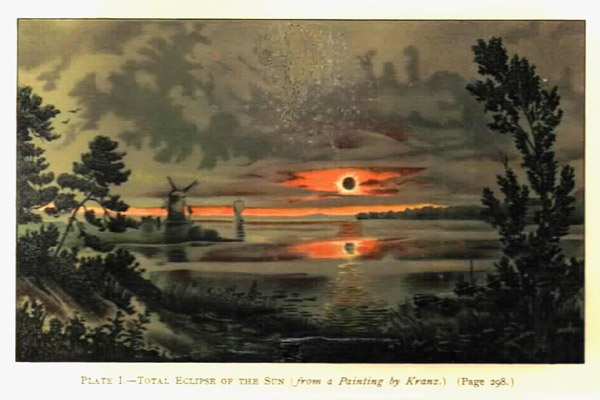Total Solar Eclipse 19th Century
This is a painting in David P. Todd’s, A New Astronomy © 1897, American Book
Company by the 19th century German painter W. Kranz. Unfortunately this beautiful
plate is water damaged top center in my copy of the textbook. The author retrieved
this plate from “Himmel und erde” edited by Dr. Schwahn. Another painting by Kranz
can be found at the LPOD website May 29, 2006. The image on LPOD is a poorly
scanned copy. I have seen a number of Kranz’s drawings and paintings and I tend to
think of him as a19th century forerunner to the great 20th century artist, Chesley
Bonestell.
David P. Todd writes this on pages 297-298 about W. Kranz’s painting in the
frontispiece:
“…Total eclipses occurring near the middle of the year are longest, if at the same
time the moon is near perigee, and their paths fall within the tropics. Always
after total eclipse is over, the partial phase begins again, growing smaller and
smaller and the sun getting continually brighter, until last contact when full
sunlight has returned.… If the atmosphere is saturated with aqueous vapor, weird
color effects ensue, by no means overdrawn in the frontispiece.”
Frank McCabe

